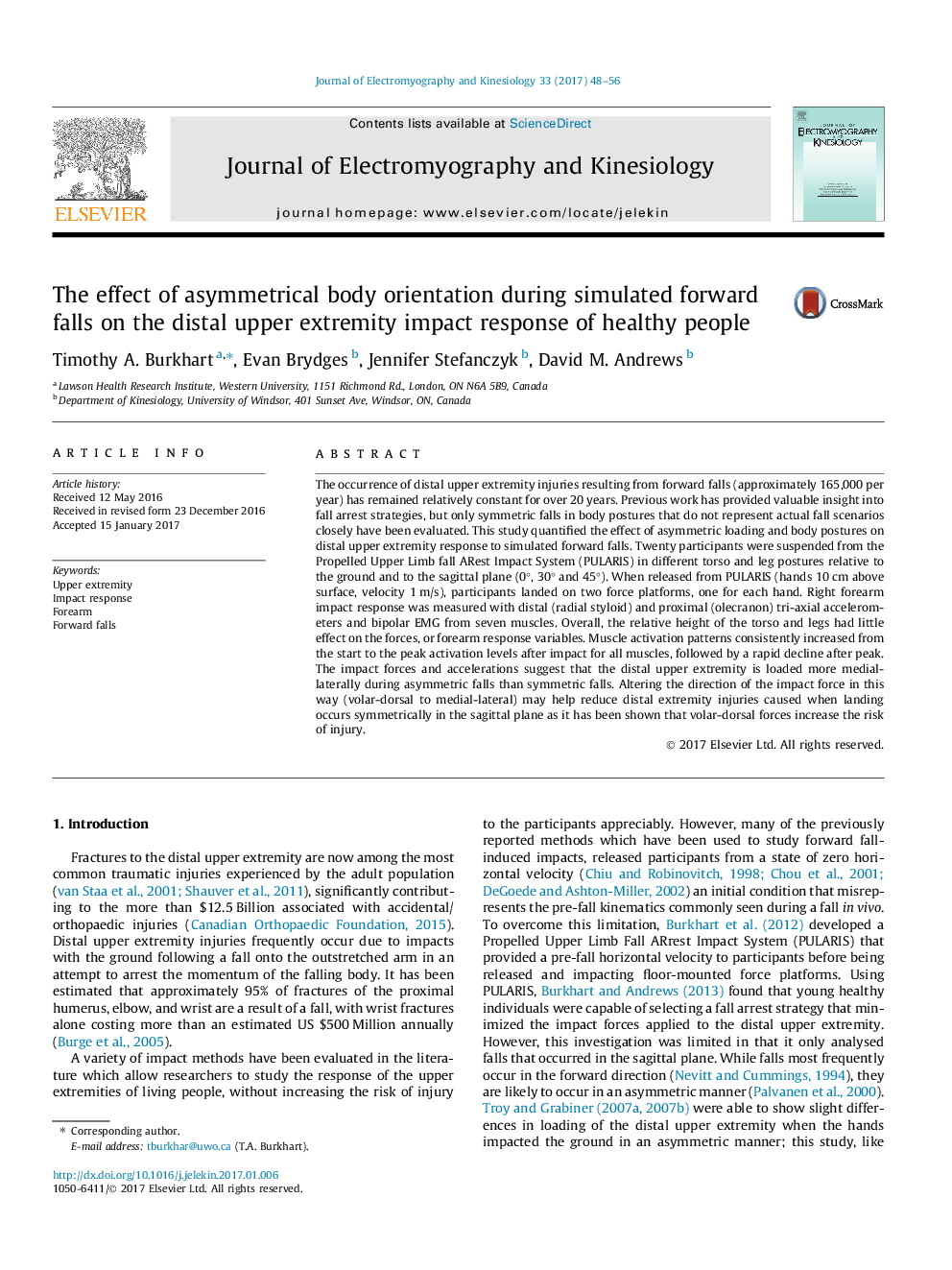| Article ID | Journal | Published Year | Pages | File Type |
|---|---|---|---|---|
| 5709496 | Journal of Electromyography and Kinesiology | 2017 | 9 Pages |
Abstract
The occurrence of distal upper extremity injuries resulting from forward falls (approximately 165,000 per year) has remained relatively constant for over 20 years. Previous work has provided valuable insight into fall arrest strategies, but only symmetric falls in body postures that do not represent actual fall scenarios closely have been evaluated. This study quantified the effect of asymmetric loading and body postures on distal upper extremity response to simulated forward falls. Twenty participants were suspended from the Propelled Upper Limb fall ARest Impact System (PULARIS) in different torso and leg postures relative to the ground and to the sagittal plane (0°, 30° and 45°). When released from PULARIS (hands 10 cm above surface, velocity 1 m/s), participants landed on two force platforms, one for each hand. Right forearm impact response was measured with distal (radial styloid) and proximal (olecranon) tri-axial accelerometers and bipolar EMG from seven muscles. Overall, the relative height of the torso and legs had little effect on the forces, or forearm response variables. Muscle activation patterns consistently increased from the start to the peak activation levels after impact for all muscles, followed by a rapid decline after peak. The impact forces and accelerations suggest that the distal upper extremity is loaded more medial-laterally during asymmetric falls than symmetric falls. Altering the direction of the impact force in this way (volar-dorsal to medial-lateral) may help reduce distal extremity injuries caused when landing occurs symmetrically in the sagittal plane as it has been shown that volar-dorsal forces increase the risk of injury.
Related Topics
Health Sciences
Medicine and Dentistry
Orthopedics, Sports Medicine and Rehabilitation
Authors
Timothy A. Burkhart, Evan Brydges, Jennifer Stefanczyk, David M. Andrews,
